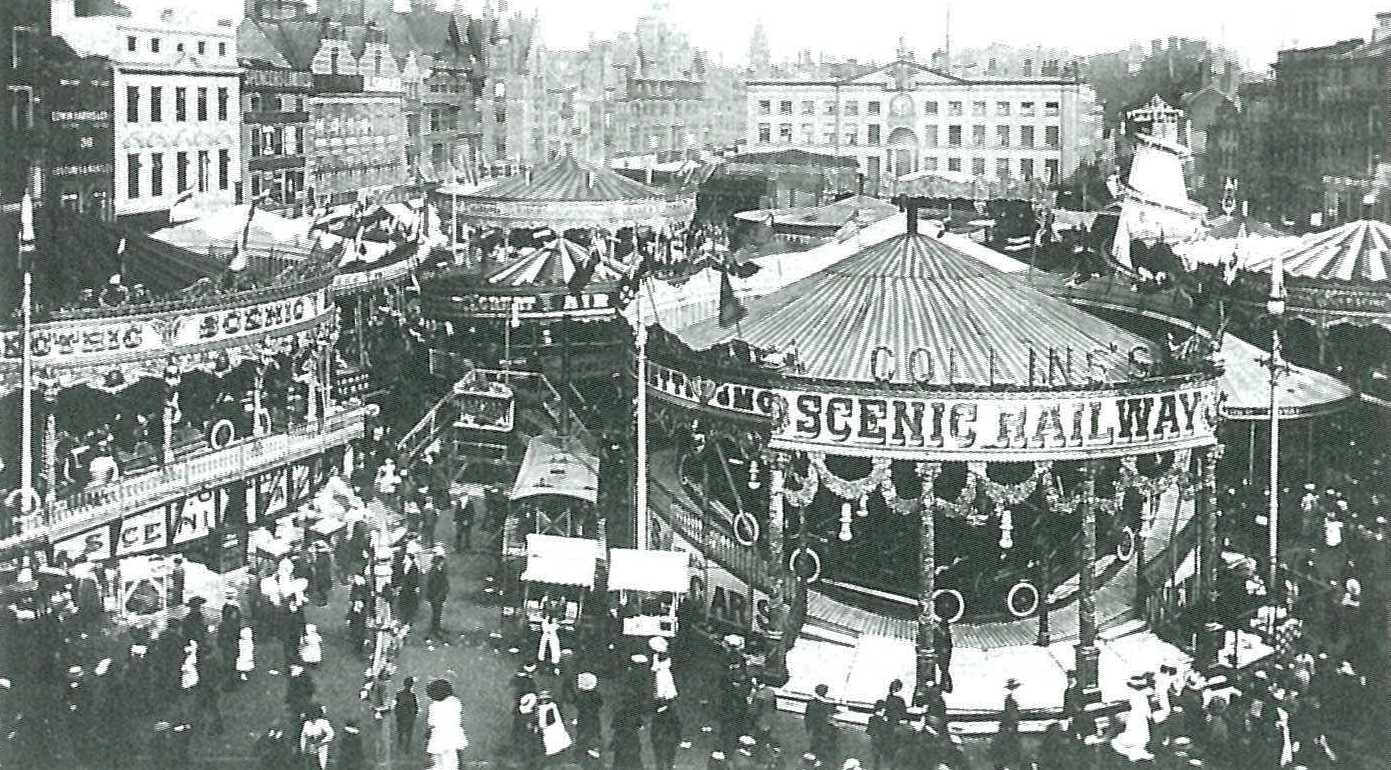
October 6, 2016, by Kathryn Steenson
Take a Gander at Goose Fair
The first week in October can only mean one thing: the annual Goose Fair has opened on the Forest Recreation Ground! Here are a few images of previous Goose Fairs, mainly taken from old picture postcards, to get you in the mood before you go.
Originally fairs were important opportunities for people to stock up on goods, particularly those not available locally, before winter made travelling more difficult. Goose Fair was essentially a market for cheese, livestock and geese from Lincolnshire (as the name implies) and dates back more than 700 years. King Edward I’s charter to Nottingham dated 1284 mentions an eight-day fair starting on the Feast day of St Matthew (i.e. 21st September). The Fair moved to October after the introduction of the Gregorian calendar. No Fair was held in the year of the calendar change, 1752, but the next year the Fair picked up where it had left off.
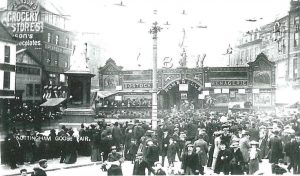
Bostock & Wombwell’s Menagerie (Lund, ‘Goose Fair in Old Picture Postcards’, EMC Pamphlet Not3.N44 LUN)
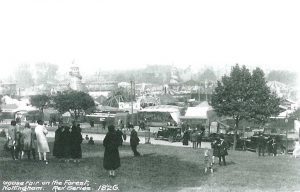
Goose Fair on the Forest Rec, 1930 (Lund, ‘Goose Fair in Old Picture Postcards’, EMC Pamphlet Not3.N44 LUN)
The first surviving written mention of Goose Fair was in the 1540s, although it was probably known as this for considerably longer. Originally held in Market Square, it moved to the Forest Recreation Ground in 1928 after the Square was redeveloped. Historically the length of the fair has varied from as long as eight days to as short as three. The reduction to just three days took place in the nineteenth century, and coincided with the change in focus to an entertainment fair, including fairground rides – steam-powered until 1911 – fortune tellers, freak shows, exotic animals and magicians.
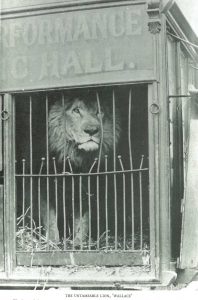
Wallace the ‘Untamable’ Lion was a perfectly acceptable entertainment in the 1890s (Iliffe & Baguley, ‘Victorian Nottingham, Volume 4’, EMC Oversize Not3.D28 ILI)
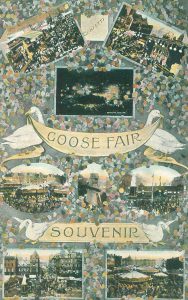
Souvenir Programme, 1908 (Iliffe & Baguley, ‘Victorian Nottingham, Volume 4’, EMC Oversize Not3.D28 ILI)
Today, it is by far the largest fair in Nottingham, and one of the largest travelling shows in the country. This wasn’t the case in the Middle Ages, however, when it was overshadowed by the Lenton Fair Lenton Priory. Lenton Fair was first held in 1164 and ceased a century ago (although it has recently been revived as a local history event). Goose Fair has suffered only temporary cancellations, most notably due to an outbreak of bubonic plague in 1646, and the two World Wars.
It’s fair to say that amongst the carousels and dodgems, hooplas and darts, stalls of mushy peas and Chinese noodles , the nearest thing to a ‘goose’ the modern fair offers is the hook-a-duck stall!
The books featured here are in the East Midlands Collection, which is catalogued on NUSearch. The collection is based at Manuscripts & Special Collections on King’s Meadow Campus. To make an appointment to view the archives and rare books, please contact us. More information about other collections is on our website. For general information, read our newsletter Discover, or follow us @mssUniNott.
No comments yet, fill out a comment to be the first

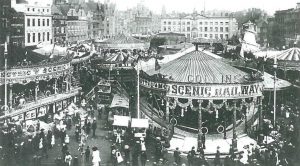
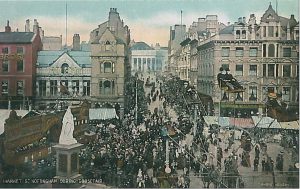
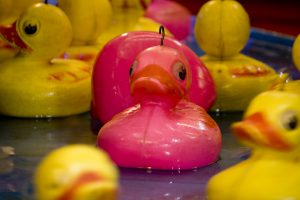
Leave a Reply